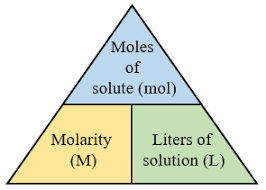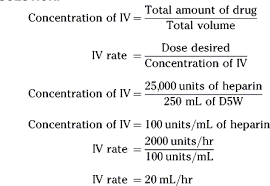|
Getting your Trinity Audio player ready... |
Pharmacy Calculations: Comparing Two Means Using The T-Test
Introduction to the T-Test in Pharmacy Calculations
T-Test : In the field of pharmacy, accurate measurement and comparison of results are critical for ensuring the quality and effectiveness of pharmaceutical products. When comparing measurements, such as the fluoride concentration in a toothpaste sample, the T-test is a widely used statistical tool. This test helps in determining whether there is a statistically significant difference between two sets of data, making it a vital tool in quality control and analysis.
For example, a pharmaceutical company may want to compare the fluoride concentration in a toothpaste sample measured by two different analysts or methods. In such cases, the T-test allows the analyst to assess if any observed differences are due to random error or represent a real difference.
What is the T-Test?
The T-test is a statistical test that helps determine if there is a significant difference between the means of two groups. It is particularly useful when dealing with small sample sizes and when the population variance is unknown, which is common in real-world pharmaceutical experiments. The T-test calculates a “t-value” and compares it with a critical value to decide whether to accept or reject the null hypothesis.
Null and Alternative Hypotheses
In statistical analysis, we begin with two hypotheses:
- Null Hypothesis (H₀): The means of the two groups are equal. Any observed difference is due to random error and not due to any actual difference in the means.
H0:μ1=μ2H₀: \mu_1 = \mu_2H0:μ1=μ2
- Alternative Hypothesis (H₁): The means of the two groups are not equal. Any observed difference is statistically significant and is not due to chance.
H1:μ1≠μ2H₁: \mu_1 \neq \mu_2H1:μ1=μ2
The goal of the t-test is to test these hypotheses and determine whether there is enough evidence to reject the null hypothesis in favor of the alternative hypothesis.
Statistical Analysis Using the T-Test
The t-test involves comparing the means of two independent sets of data, such as measurements taken by two different analysts. The calculated t-value is then compared with a critical value to assess the significance of the difference between the two means.
Steps for Performing a T-Test
Let’s explore the detailed process of performing a T-test using an example. Suppose we are comparing the fluoride concentration in a toothpaste sample measured by two different analysts. We want to assess if there is a significant difference between the two sets of measurements.
Problem Overview
Two trainee analysts measured the fluoride concentration in a toothpaste sample, using the same method and calibration curve. They conducted the experiment in quintuplicate (five measurements each). The measurements for each trainee are as follows:
- Trainee 1 (ppm): 1392, 1390, 1390, 1391, 1395
- Trainee 2 (ppm): 1413, 1408, 1406, 1420, 1399
The task is to:
- Assess the statistical dispersion (spread) of the two datasets.
- Construct a 95% confidence interval for each set.
- Perform a t-test to determine if there is a significant difference between the mean fluoride concentrations of the two trainees.
Step 1: Calculate Basic Statistics
Before performing the t-test, we first need to calculate basic statistics for each data set. These statistics will help us understand the spread and central tendency of the data.
| Statistic | Trainee 1 (ppm) | Trainee 2 (ppm) |
| Mean (µ) | 1391.6 | 1409.2 |
| Standard Deviation (s) | 2.6 | 9.8 |
| Relative Standard Deviation (RSD) | 0.1% | 0.6% |
| 95% Confidence Interval (CI) | ±2.6 | ±9.8 |
From these calculations, we observe that the measurements from Trainee 1 are more precise (lower standard deviation and relative standard deviation) compared to Trainee 2, whose measurements show higher variability.
Step 2: Construct a 95% Confidence Interval
The 95% confidence interval provides a range of values within which we are 95% confident that the true population mean lies. For each trainee’s data, the confidence interval is calculated as:
- Trainee 1: 1391.6 ± 2.6 ppm
- Trainee 2: 1409.2 ± 9.8 ppm
The confidence interval gives us an idea of the precision of the measurements. Trainee 1’s results are more precise as indicated by the narrower confidence interval.
Step 3: Formulate the Hypotheses
The next step in the statistical analysis is to define the null and alternative hypotheses. As stated earlier:
- Null Hypothesis (H₀): There is no significant difference between the mean fluoride concentrations measured by Trainee 1 and Trainee 2.
H0:μ1=μ2H₀: \mu_1 = \mu_2H0:μ1=μ2
- Alternative Hypothesis (H₁): There is a significant difference between the mean fluoride concentrations measured by Trainee 1 and Trainee 2.
H1:μ1≠μ2H₁: \mu_1 \neq \mu_2H1:μ1=μ2
We will use the t-test to assess whether we can reject the null hypothesis.
Step 4: Perform the T-Test
Now, we will perform the T-test for two means assuming unequal variances, as the data sets may have different variability. The steps to conduct the test in Excel are as follows:
- Enter the data: Input the measurements from both trainees into two columns in Excel.
- Perform the t-test: In Excel, use the “Data Analysis” tool and select the “t-Test: Two-Sample Assuming Unequal Variances” option.
- Input the required parameters:
- Select the two columns of data.
- Set the hypothesized mean difference to 0 (as per the null hypothesis).
- Set the significance level (α) to 0.05.
- Interpret the results: The result from the t-test will include the p-value, which helps us make a decision regarding the null hypothesis.
Step 5: Interpret the Results
After running the t-test in Excel, we obtain the following results:
| Statistic | Value |
| t-Statistic | -2.21 |
| p-Value (two-tail) | 0.033 |
| Degrees of Freedom | 7 |
Since the p-value (0.033) is less than the significance level (0.05), we reject the null hypothesis (H₀). This means that there is a statistically significant difference between the mean fluoride concentrations measured by the two trainees.
Conclusion
In conclusion, the t-test has shown that the mean fluoride concentrations measured by Trainee 1 and Trainee 2 are significantly different at the 0.05 significance level. Therefore, we reject the null hypothesis and conclude that the two trainees obtained different results.
Practical Implications in Pharmacy
The T-test is a powerful tool in pharmaceutical analysis, particularly when comparing results from different analysts or methods. By using this test, analysts can determine whether observed differences are due to random error or reflect a true discrepancy in the results. This type of statistical analysis helps ensure the reliability and consistency of pharmaceutical products.
Summary of Steps for Performing a T-Test
- Define the null and alternative hypotheses.
- Calculate basic statistics for the data sets (mean, standard deviation, etc.).
- Formulate the hypotheses (null and alternative).
- Perform the t-test using software like Excel.
- Interpret the p-value to determine whether the means are significantly different.
By following these steps, pharmacists and analysts can make informed decisions based on statistical evidence, ensuring the accuracy and reliability of their measurements.
This approach demonstrates how the T-test is applied in pharmaceutical calculations, with a detailed example to illustrate the steps involved. Such statistical tools are indispensable in ensuring the quality and safety of pharmaceutical products, and the ability to interpret these tests correctly is essential for professionals in the field.
















Leave a Reply